What Beginning Gardeners Wish They Had Known Before They Started Their First Garden
When we begin dreaming of our first garden, we get anxious, wondering if we’ll ever learn everything there is to know. (Short answer: no, because in gardening, learning never stops!) But what if we could ask other gardeners just a few seasons ahead of us what they wish they’d known before they started their first gardens?

When I started the Beginner’s Garden Podcast in 2017, my sole purpose was to provide resources for beginning gardeners. In my first garden, I had struggled to find resources that catered toward true beginners. So I created what I wished I had.
But I wanted more than just a place where I could teach gardening; I wanted to grow a community of like-minded gardeners so we could all learn from each other. That’s why I created The Beginner’s Garden Shortcut Facebook Group.
Because I know first-time gardeners thirst for helpful gardening advice particularly suited to them, I asked members of my Facebook group what they wish they had known when they started their first gardens.
I learned so much from them that I couldn’t leave their advice in the group. From these helpful sophomore gardeners (and veteran gardeners alike), I compiled this list of what beginning gardeners wish they had known before they started their first gardens. Click below to listen to the discussion on the Beginner’s Garden Podcast, or keep reading.

*links below contain affiliate links
1. Don’t try to do too many new things at once in your first garden
Start small. Most beginning gardeners know this, but many don’t heed that advice! (Full disclosure: I didn’t either.) Not starting too many new things at once can apply to gardeners of every stage. It’s easy to get overloaded and overwhelmed and it would be better to learn a few things really well and expand each season.
2. Start planning your garden sooner rather than later
I usually start planning my spring garden at Christmas. My season starts pretty early and I need to have a good idea of what I need to do to get ready to plant. If you give yourself plenty of time to plan, you’ll feel more confident when it’s time to plant.
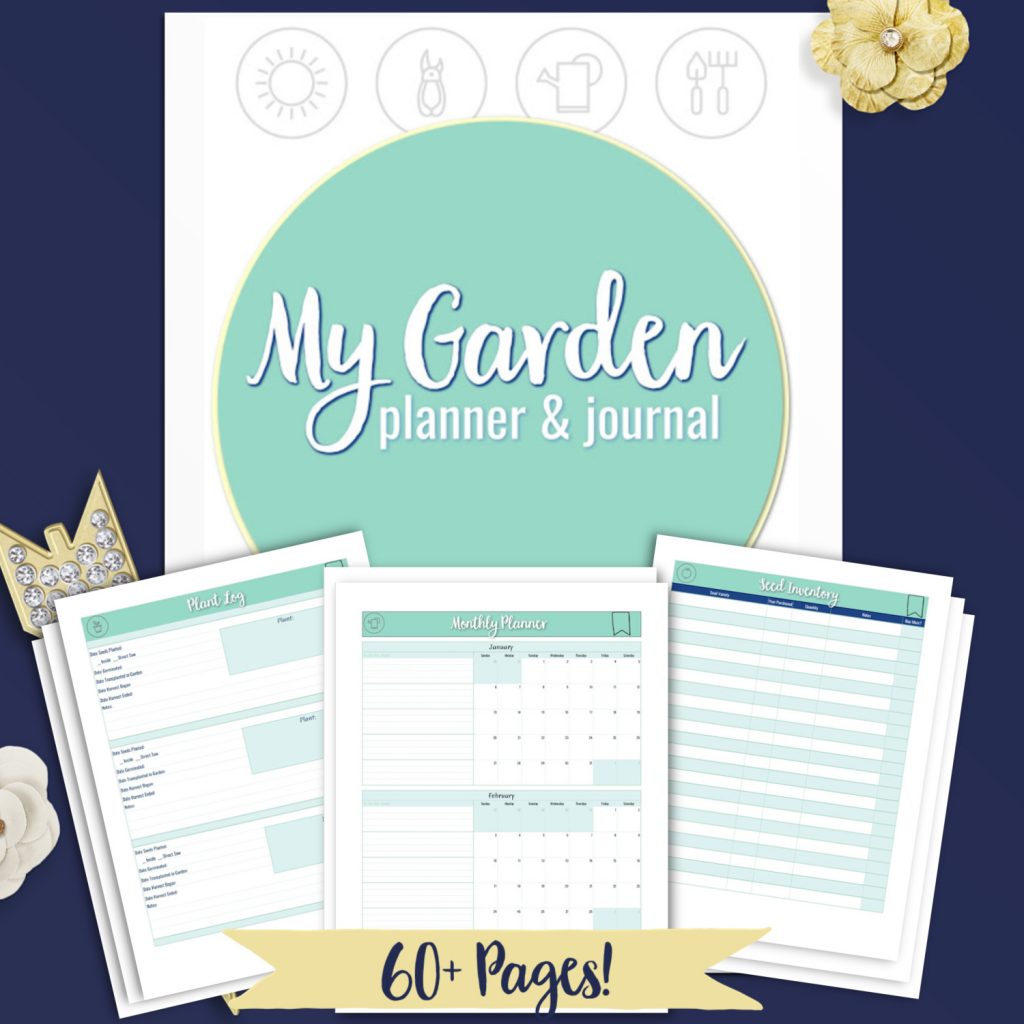
3. Understand the 2 types of crops — cool weather and warm weather
The vegetables you plant in your garden fall into two categories: ones that thrive in cool weather and can tolerate cold, and those that thrive in warm weather and die in a frost or freeze. When we don’t understand what kind of weather our crops prefer, we risk planting them at the wrong time of year. You want to plant at the right time for your crops to be successful.
Cool-weather crops need to be planted earlier in the spring because they can withstand a frost but can’t handle the summer heat. Warm weather crops will not handle the frost and we should wait to plant them.
Related: When to Plant: Guide to Getting Your Crops in the Ground at the Right Time
4. Start with what you will eat
There’s nothing wrong with experimenting — it can be really fun! But you will be much more motivated to tend to your garden when you’re growing crops that your family enjoys.
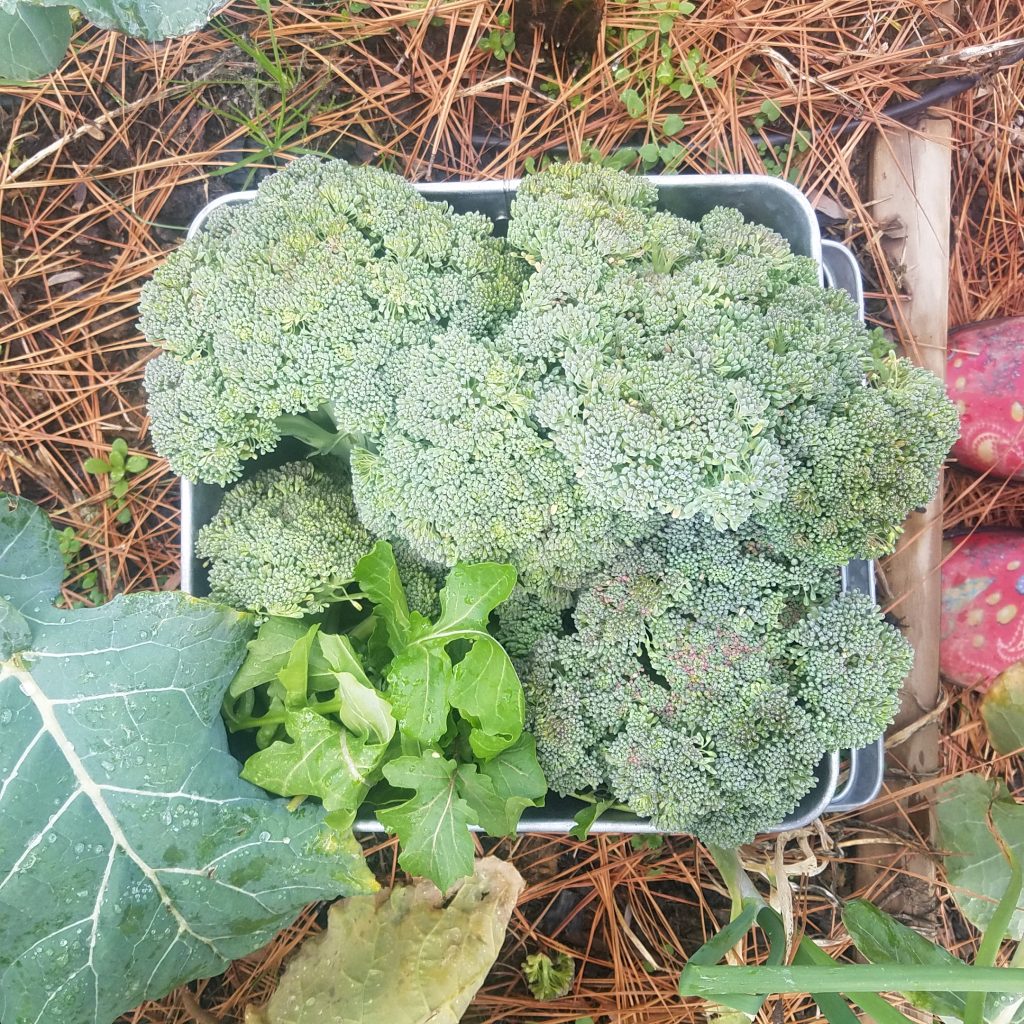
5. Focus on enriching the soil
It is incredible the difference that rich and healthy soil makes! Learning how to compost can be very beneficial. Instead of putting food scraps and grass clippings into the landfill, put it in a compost bin and use that compost to put organic material back into your garden. Learn more about composting here.)
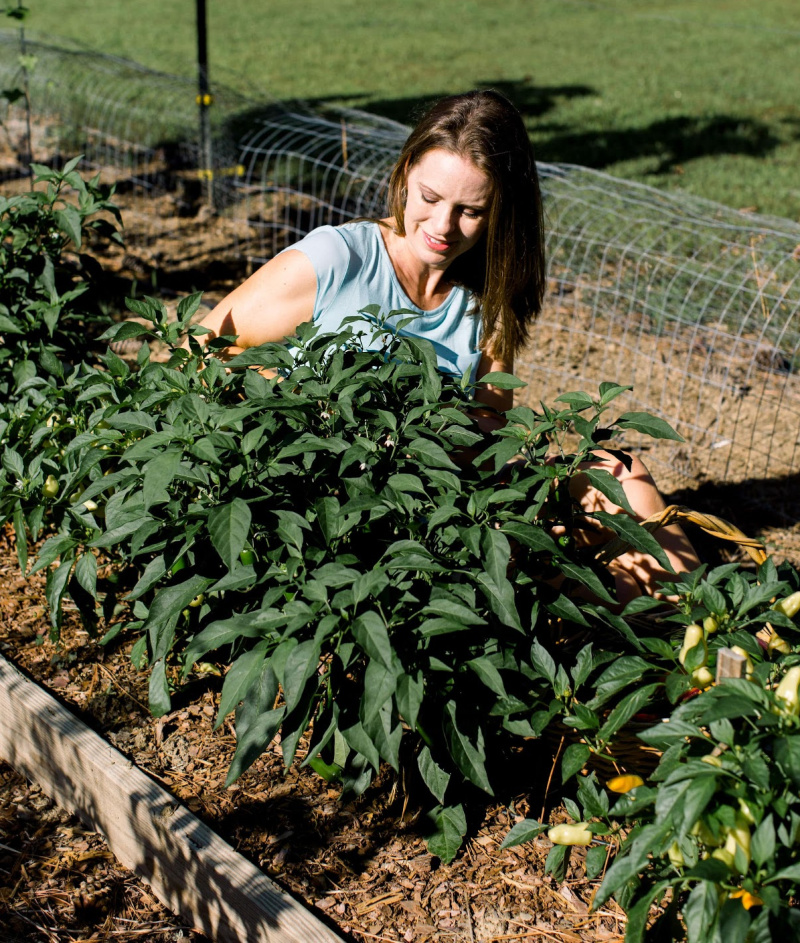
If you start gardening in the ground (as opposed to raised beds or containers), plan to test your soil and amend it with the needed nutrients. Over the years, you will notice a dramatic difference in your soil.
If you garden in raised beds or containers, pay special attention to the organic matter you add to the soil. A rich, fertile soil will provide you with a healthier garden with much higher yields than an average one.
6. Gardening can be expensive (but it doesn’t have to be)
Starting a garden can cost more than you expect, but it doesn’t have to. I started my garden on a shoestring budget and have built a little more every year. I love to help beginning gardeners save money! Especially if you’re starting with raised beds, here are ideas on how to save money on raised bed soil.
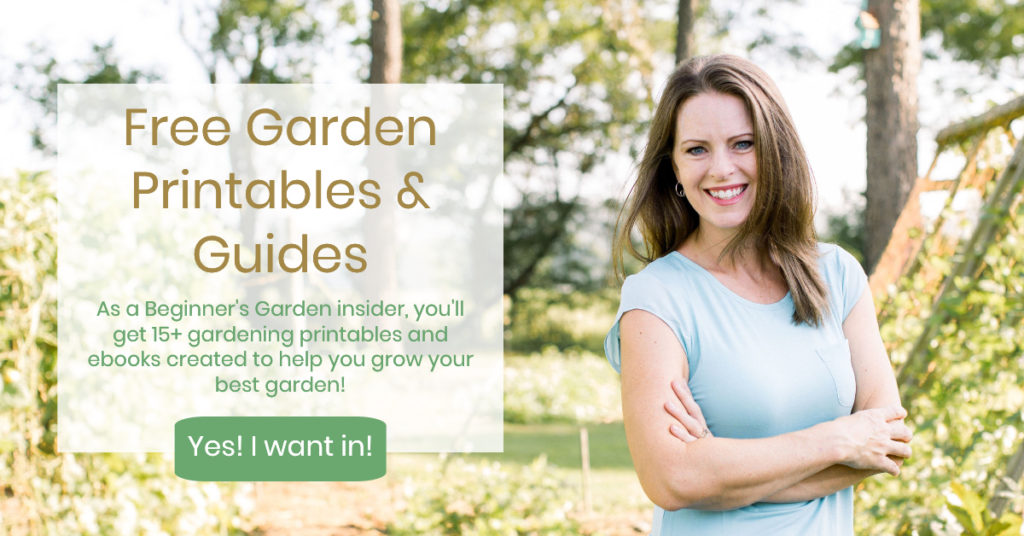
7. Plan irrigation early in the gardening season.
It is much easier to add drip lines or soaker hoses before the plants get too big. In the early spring, have this planned and you don’t have to stand in your garden with a watering hose. (Or worse, you let your garden go without water for several days in the heat of the summer.) Have a plan before you realize you need a plan.
Learn more about garden irrigation here.
8. Plan your garden layout with wide paths to move around, squat, and kneel.
To enjoy your time in the garden, ensure you have enough space to work between rows or between beds.
I situated my raised beds too close together. There is barely enough room for a small gardening stool but it’s a tight fit and very uncomfortable. I quickly learned that I needed more space to pull weeds and tend to my crops comfortably.
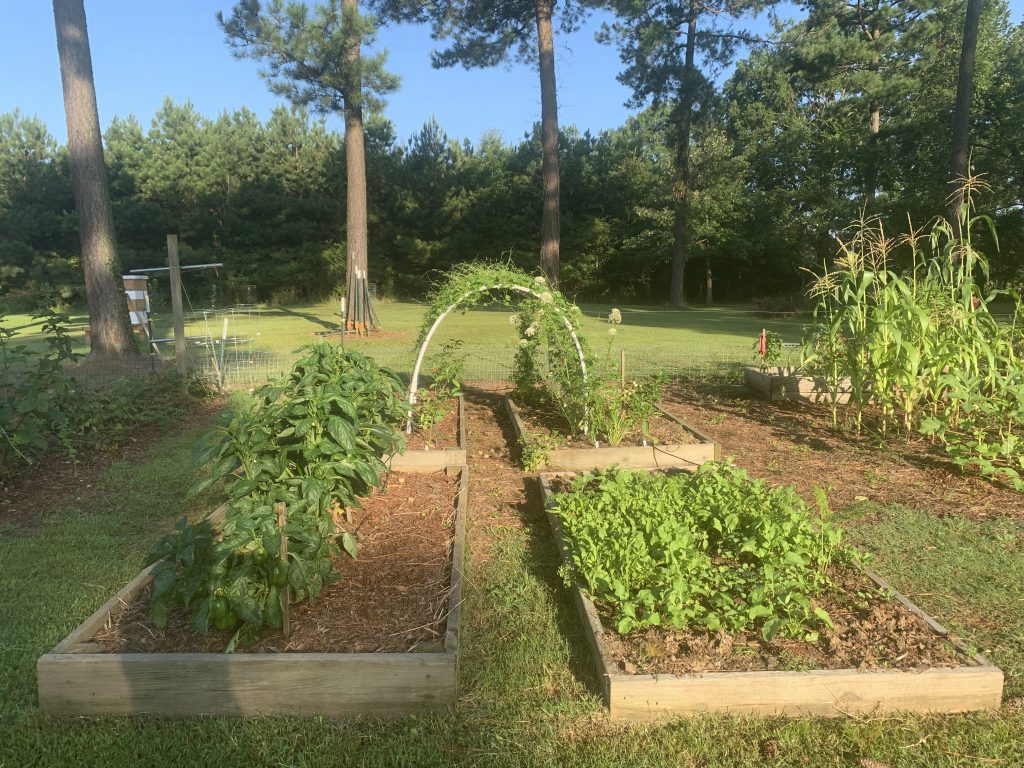
In my ground beds, I learned to keep wide rows to walk and to easily roll a wheelbarrow for mulch and compost. I also learned that larger and vining crops encroach on those walkways, making summertime maintenance a challenge. I now keep my walkways at least 24″ wide.
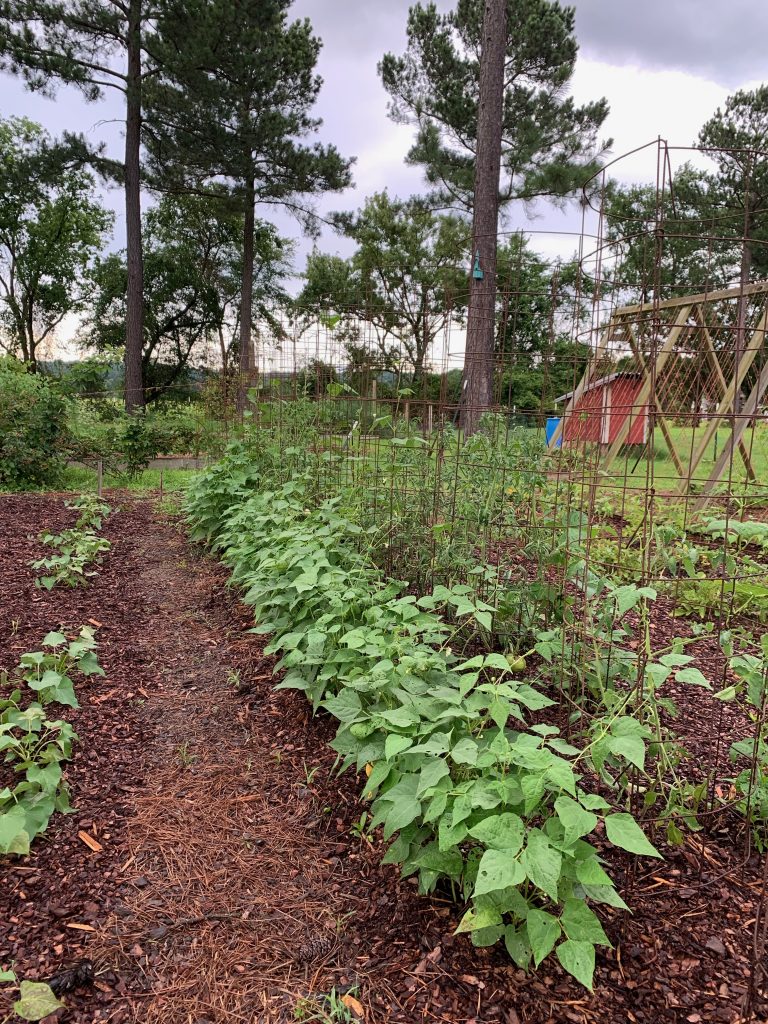
9. Research, using both Internet sources and neighbors
While the internet is full of wonderful resources, nothing can replace advice from gardeners local to you. Books also can’t speak to nuances in your climate and location. I can’t count how many times I’ve had to adjust my garden from what I’ve read in a trusted garden source because it didn’t fit my climate and unique growing conditions.
Plus, when you talk with local gardeners, you get the added benefit of building friendships. And there’s nothing more comforting than struggling with a pest or disease and knowing that you’re not the only one.
10. Think about future garden expansion projects before placing beds so you don’t have to move things around
My garden began in two fragmented locations. A few years later when I decided to combine my garden areas into one location, I moved several raised beds. Though they all remained intact, I wouldn’t recommend it.
If you’re starting small (see #1) and hope to expand, think about what a bigger garden could look like while you start your small bed and leave yourself room to grow.
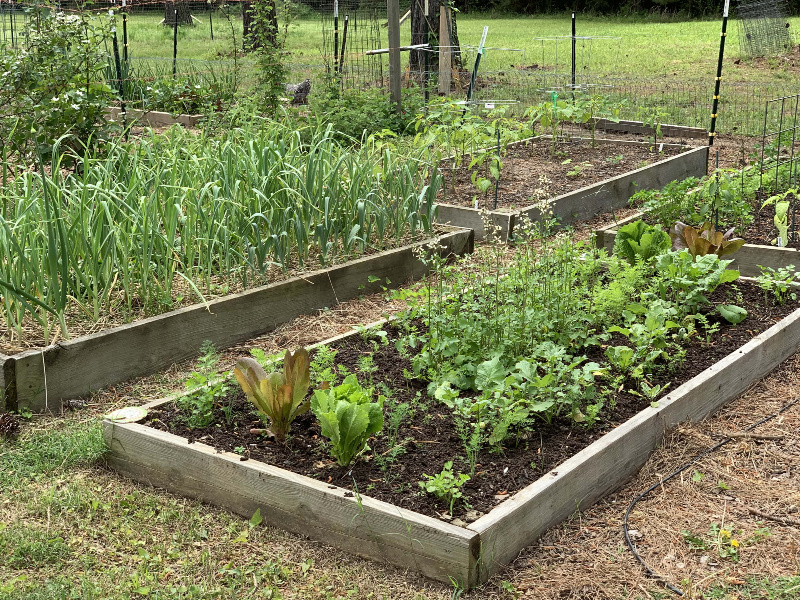
11. Not everything in your first garden will succeed
Start your garden with a realistic mindset and expectations. Instead of drowning in frustration when things don’t go perfectly, look at failures as learning opportunities. It can be very discouraging when pests overtake your garden or disease destroys what you worked so hard to cultivate. But each failure offers so much opportunity for learning and growth. Some of my most productive garden lessons came from failures.
12. Draw a map for reference next season
Know what you planted where; it will prove crucial for your garden planning next season. I recommend that you draw a garden grid as you plan your garden early in the season. But if you end up changing planting locations on the fly (which I end up doing every season without fail), make sure you edit your layout for future reference.
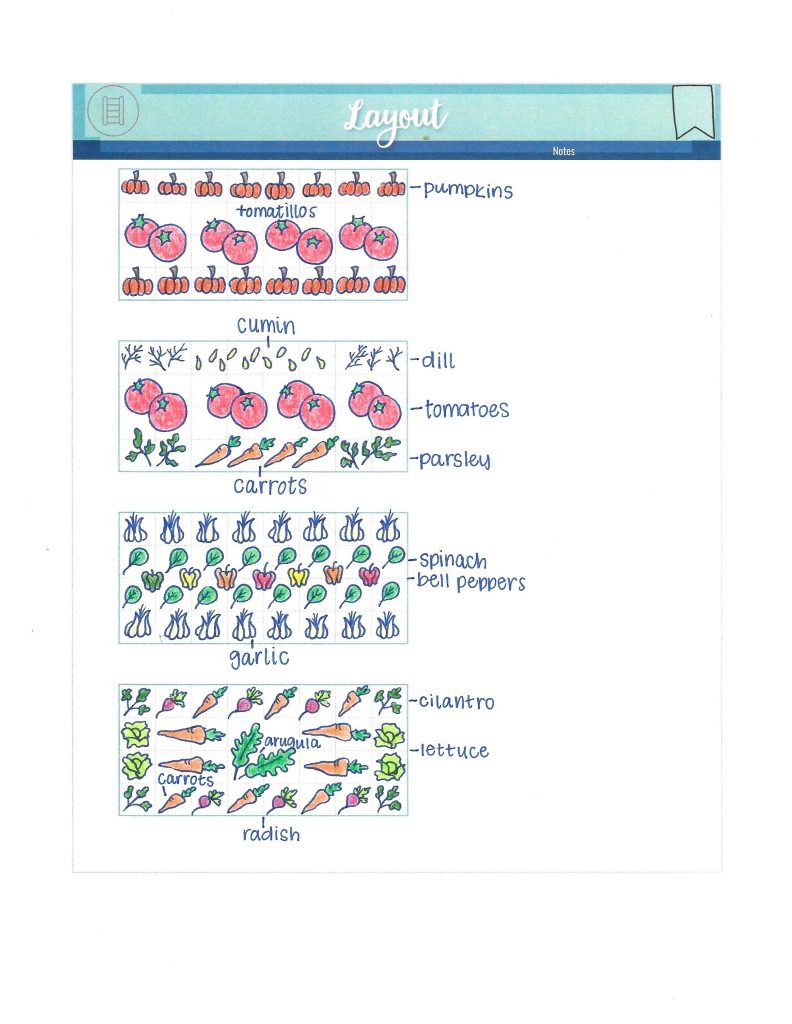
13. Plant spacing is important
How far should you space your crops apart? Planting too close is a common mistake first-year gardeners make. It is hard to imagine how big our crops will end up so we plant our seeds or seedlings too close together. Research and understand the mature size of your plant and plan the spacing accordingly.
You can find plant spacing recommendations online or in reputable garden books. I also include this in my online beginning gardener’s course, the Beginner’s Garden Shortcut.

14. Keep up with weeding by doing small sections at a time instead of all at once
No matter what you do, no matter how much mulch you apply, you will deal with weeds. Instead of doing it all at once, plan to weed small sections at a time. It’s not fun to spend a day weeding, but if you do a little at a time it is manageable. Create a plan before you realize you need one.
Grab some earbuds and listen to favorite gardening podcasts. This always helps pass the time for me.
15. Prepare for pests
How do you prepare for pests when you don’t know which ones to prepare for? You usually won’t know what is in your area until you see them in your garden. But you can prepare your mindset. You know that you will encounter pests, so just be prepared for it. I keep Bacterial Thuringiensis and diatomaceous earth on hand in case I need it. But I have found soil health and attracting beneficial pests to be much more important.
16. Tomatoes are hard to grow
There are a lot of things that go into growing tomatoes. Planting needs, pests, disease, sunscald, pruning, staking, and many other decisions all come into play. I don’t say that to discourage a new gardener from growing tomatoes, but please don’t beat yourself up if you start having issues. If you’re looking to start growing tomatoes, cherry or Roma tomatoes are good choices for beginners.
17. Check varieties in your nursery to make sure they will grow in your area
This shouldn’t be an issue at a local nursery, but you might check when you go to the big box store. I take my phone with me and do a quick Internet search to make sure a certain variety will work in my area.
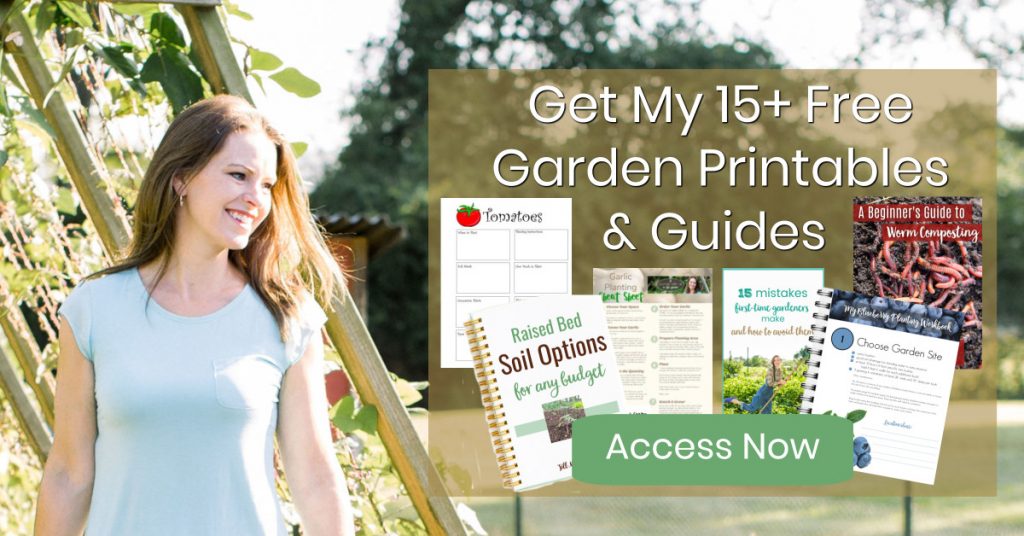
18. Don’t plant mint in the garden without a container
We won’t go too deep into companion planting here, but it is important to look up a plant’s growing habits. Mint tends to take over wherever it is planted so it is best grown in containers. As much as I love peppermint and its cousins lemon balm and spearmint, I don’t want an entire garden full of it.
19. No-till garden method
For the first few years of my garden, I tilled every season. But once I finally got a handle on my mulch (and weeds), and stopped expanding my in-ground garden, I stopped tilling my soil. Not tilling my garden has been wonderful for my soil heath. Weed pressure has gone down each season, my soil is full of earthworms, and the tilth has improved each year.
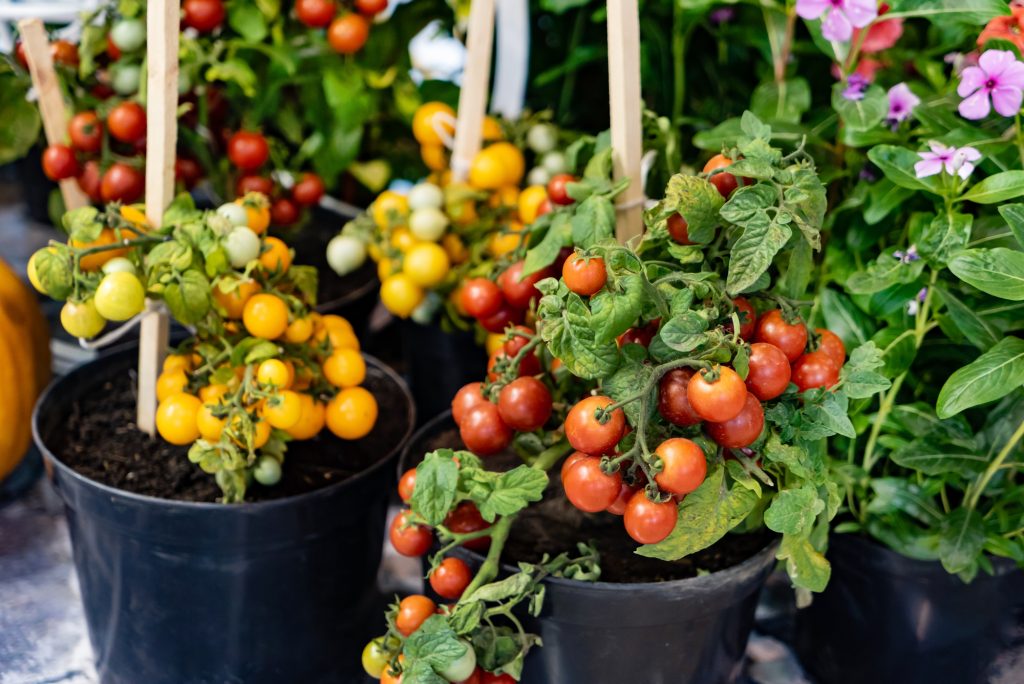
20. Bigger planters
Similar to the spacing issue I mentioned earlier, it is easy to plant a small seedling in a planter that is too small. We want to make sure we research how much space a plant will need in a container. Container gardening has its own challenges but it is very rewarding.
21. Put hardware cloth on the bottom of raised beds if moles or other ground-dwelling critters are a problem.
While I haven’t had moles or other ground-dwelling wildlife in my garden, I know that it is a common problem. One way to keep them out of your raised beds is to place hardware cloth in the bottom of your raised bed before you fill it with soil.
22. Don’t be so rigid about following rules but get the basics down. Have fun and experiment.
While we are dealing with many “rules” today (and I’m the kind of person who wants to know the rules), it is good to remember that we should be having fun. If we’re too rigid about our gardening rules, it can keep us from experimenting and trying new things. Be ready to fail and ready to learn through the failures and successes alike.
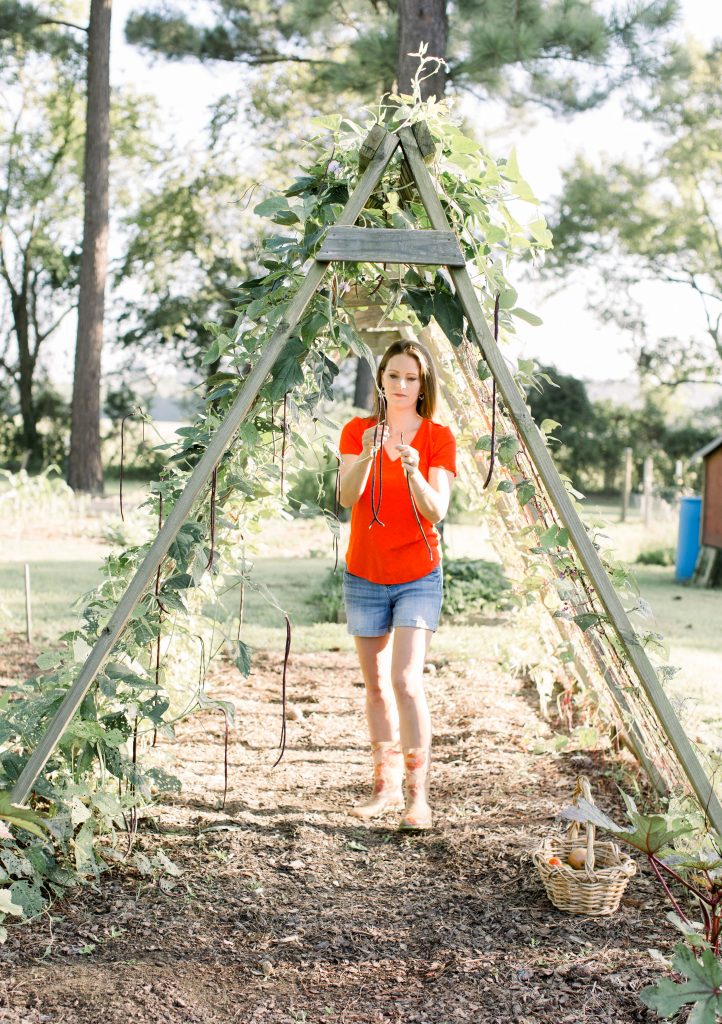
23. Understand you’ll have to do something with what you harvest.
This seems obvious, but it can be easy to overlook. We spend so much time planning and planting that by the time we’re harvesting we’re not sure what to do with all the produce we have grown. Every year I end up on Pinterest frantically trying to find recipes to use all of some vegetable that has been a little too successful. Asking other gardeners in my free Facebook group is also a great way to get ideas on unique recipes and preservation methods!
It is also easy to overlook how much time it can take to can and process your harvest. If you are doing any freezing, canning, or dehydrating, then you will learn very quickly. When you get the hang of it, it is pretty easy, but it still takes some time. You will want to plan to take the time after you harvest.
I know that I learned so much from these tips from my Facebook group and I hope that you did too. I’d love to hear from you! What do you wish you had known when you started your first garden? What would you add to this list? I’d love to hear your thoughts!
Avoid Common Beginning Gardening Mistakes

Grab this free download and not only discover some of the most common mistakes first-time gardeners make -- but even more important -- learn what to do to avoid those mistakes altogether!
Plus, I'll send you my "In the Garden E-mail" on Fridays, periodic updates on garden resources relevant to you, and get access to my entire bank of free garden downloads!
You are also agreeing to our privacy policy.


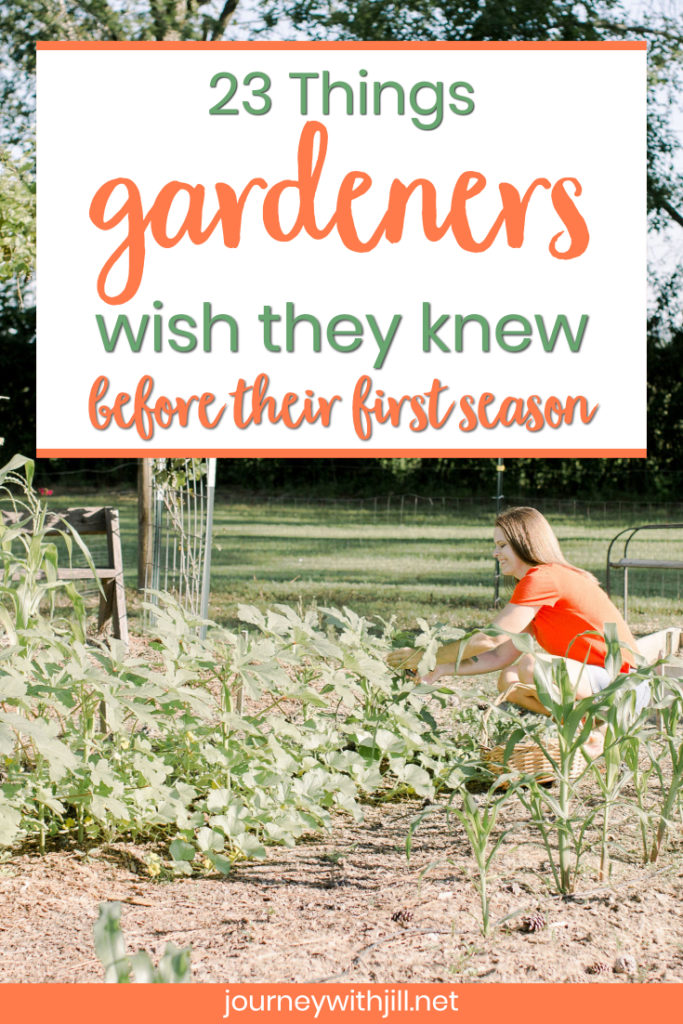
JILL YOU ALWAYS OFFER SO MUCH KNOWLEDGE FOR NEW AND OLD GARDENERS. I DO HAVE SOME OF MY OWN SECRETS I CAN SHARE AS WELL.. WE ARE PLASTIC MANUFACTERERS. WE MAKE A PLASTIC BLOCK FOR RAISED BEDS NO GLUE OR NAILS NEEDED. THEY FORCE FIT TOGETHER. OUR ESTIMATE THEY CAN LAST 50 YEARS IN ANY WEATHER. CHECK MY NEW WEBSITE OUT ANVIPLASTICS.COM IF INTERESTED I CAN EXPLAIN MORE. THIS PAST SEASON WAS A TESTING PERIOD. WE PRODUCED 2000 UNITS OF FRUIT AND VEGGIES. ++ HERBS OF ALL KINDS. LET ME KNOW IF I CAN EXPLAIN MORE.
I just enjoyed your 2 podcasts on ‘things I wish I knew then’.
I wish I had known my first and last frost dates and had actually counted the number of days in my northern growing the season.
Yes, that’s so critical! I don’t have to pay as much attention to my growing season days because my season is so long, but with northern gardeners like you said, it’s a much bigger deal.
I would add this to the beginning gardeners list of things to consider:
Orientation to the sun is important as is plant placement. Ideally, you’ll want your beds placed in a North-South direction to take the best advantage of the sun’s rays. Place taller plants toward the North end of the garden so they don’t shade shorter plants; for example, don’t plant sunflowers on the South side of the bed because as they grow taller, they will shade everything to their North.
Good points! My garden runs east to west (because I didn’t know any different when I began) and it works fine. But I do try to keep taller plants to the north side when possible. Great suggestion!